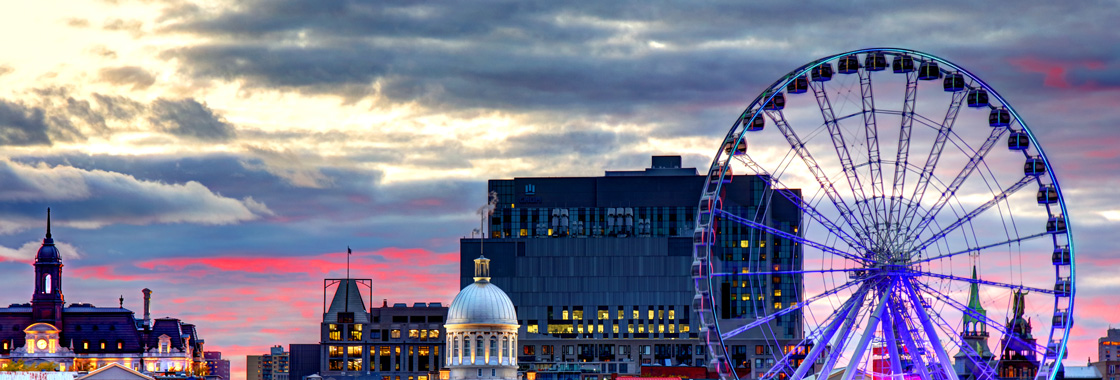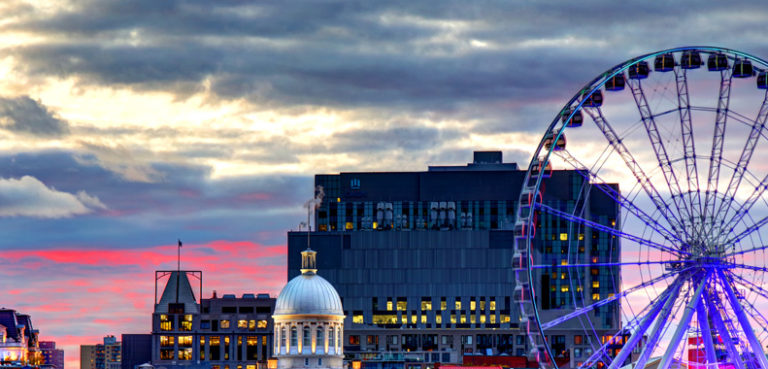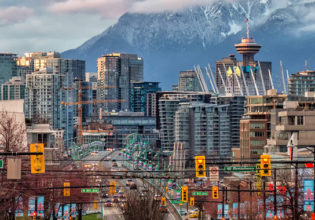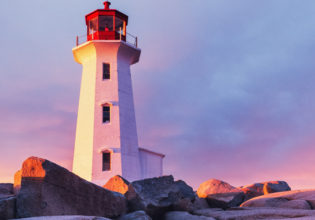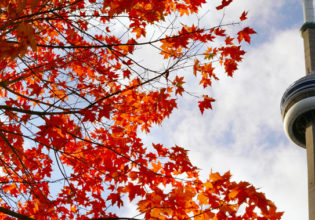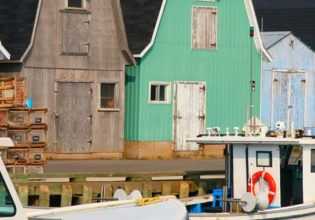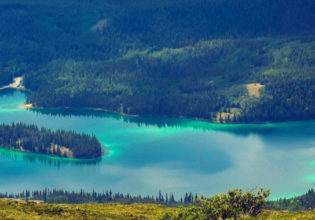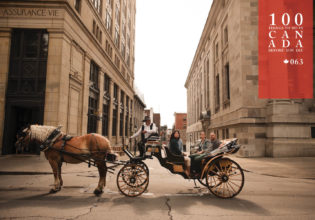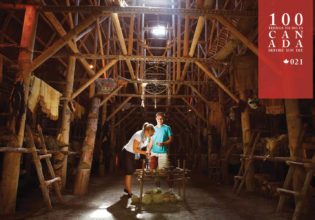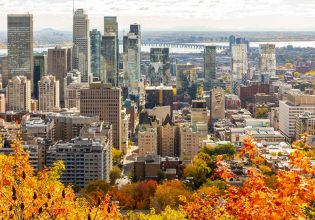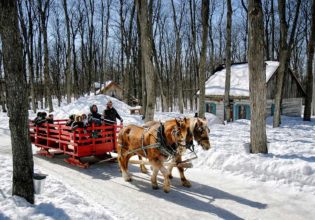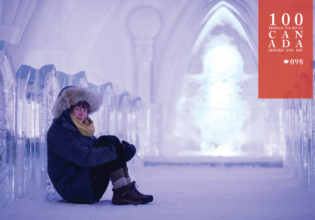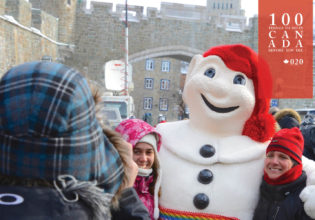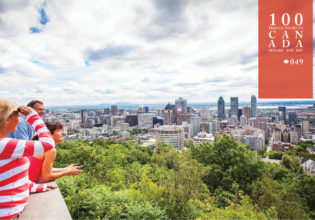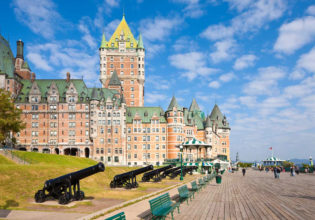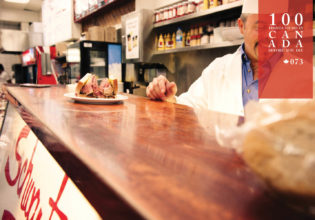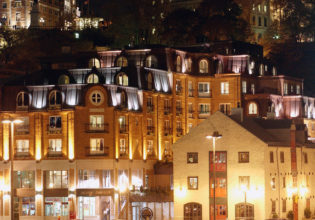While Quebec City, like most other cities of the world, has its hipster enclaves and hot neighbourhoods, the real appeal here is the old town, with its French history and architecture – if you didn’t fly in on an Air Canada plane you’d swear you were in France.
Quirky terrace houses with turret-style windows line the cobbled streets. Le Domaine de Maizerets, a spacious, pretty park on the north side of the St. Charles River offers 11 kilometres of walking, snowshoeing and cross-country ski trails, as well as a lush arboretum and the Château Ango des Maizerets, a 16th-century mansion built by the French.
The ultimate place to stay is the Fairmont Le Chateau Frontenac, a massive fairytale castle of turrets and green copper roofs that dominates the skyline. You used to be able to take guided tours of the interiors but they are no longer available, so now the only way to see the Art Deco wonders within is to book a room.
Otherwise, the Auberge Saint-Antoine is considered one of the best hotels in this part of the world.
About 125 kilometres east of Quebec City, La Maison du Bootlegger puts on a show like no other. Part museum, part restaurant and 100 per cent crazy bar with live music and a rocking atmosphere, the steak house is in fact an old Victorian home.
Montreal, the world’s second-largest French-speaking city, is number one when it comes to fun, thanks to vibrant club and dining scenes, and its well-earned status as the City of Festivals.
Touring Old Montreal is the next best thing to a European holiday.
Cobblestone streets? Check. Awe-inspiring architecture? Check. Chic boutiques, charming bistros and mimes galore? Check, check and check.
Then again, no city in Europe, or anywhere for that matter, can match the annual Festival International de Jazz, which sees 3,000-plus artists and more than two million visitors converge on Montreal for a 10-day party.
The city is also justifiably famous for its namesake foods – Montreal smoked meat and Montreal bagels – as well as for the wild nightlife of Saint Catherine Street, Crescent Street and the gregarious Gay Village.
It’s hardly surprising that visitors often bypass The Underground City (officially the RÉSO).
After all, who would expect to find 41 city blocks of shopping, entertainment and culture under their feet?
With 32 kilometres of tunnels connecting 2,000-plus shops, 40 cinemas, eight Metro stations, five museums and more than a dozen hotels, it’s the largest underground concourse in the world, and this being bohemian Montreal, the labyrinth even plays host to temporary art installations during the annual Arts Souterrain festival each February.
Farmers’ markets are such an integral part of Montreal life that they tend to be tucked away from the tourist circuit.
Such is the case with the biggest of them all: Jean Talon.
From May to October its open-air arcades are occupied by more than 300 vendors, most of whom have come from the Quebec countryside.
Butcher shops, cheesemongers, bakeries and other food emporia radiate out from the market itself.
Whether strewn with fallen autumn leaves, kissed by summer sun or coated in winter frost, Mont Royal will have you thinking you’re living in a postcard all year round. A hike up this glorious mountain is a great way to burn off all those calories you’ve no doubt consumed in nearby Montreal.
